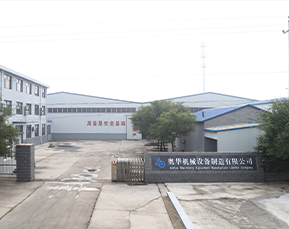 Afrikaans
Afrikaans  Albanian
Albanian  Amharic
Amharic  Arabic
Arabic  Armenian
Armenian  Azerbaijani
Azerbaijani  Basque
Basque  Belarusian
Belarusian  Bengali
Bengali  Bosnian
Bosnian  Bulgarian
Bulgarian  Catalan
Catalan  Cebuano
Cebuano  Corsican
Corsican  Croatian
Croatian  Czech
Czech  Danish
Danish  Dutch
Dutch  English
English  Esperanto
Esperanto  Estonian
Estonian  Finnish
Finnish  French
French  Frisian
Frisian  Galician
Galician  Georgian
Georgian  German
German  Greek
Greek  Gujarati
Gujarati  Haitian Creole
Haitian Creole  hausa
hausa  hawaiian
hawaiian  Hebrew
Hebrew  Hindi
Hindi  Miao
Miao  Hungarian
Hungarian  Icelandic
Icelandic  igbo
igbo  Indonesian
Indonesian  irish
irish  Italian
Italian  Japanese
Japanese  Javanese
Javanese  Kannada
Kannada  kazakh
kazakh  Khmer
Khmer  Rwandese
Rwandese  Korean
Korean  Kurdish
Kurdish  Kyrgyz
Kyrgyz  Lao
Lao  Latin
Latin  Latvian
Latvian  Lithuanian
Lithuanian  Luxembourgish
Luxembourgish  Macedonian
Macedonian  Malgashi
Malgashi  Malay
Malay  Malayalam
Malayalam  Maltese
Maltese  Maori
Maori  Marathi
Marathi  Mongolian
Mongolian  Myanmar
Myanmar  Nepali
Nepali  Norwegian
Norwegian  Norwegian
Norwegian  Occitan
Occitan  Pashto
Pashto  Persian
Persian  Polish
Polish  Portuguese
Portuguese  Punjabi
Punjabi  Romanian
Romanian  Russian
Russian  Samoan
Samoan  Scottish Gaelic
Scottish Gaelic  Serbian
Serbian  Sesotho
Sesotho  Shona
Shona  Sindhi
Sindhi  Sinhala
Sinhala  Slovak
Slovak  Slovenian
Slovenian  Somali
Somali  Spanish
Spanish  Sundanese
Sundanese  Swahili
Swahili  Swedish
Swedish  Tagalog
Tagalog  Tajik
Tajik  Tamil
Tamil  Tatar
Tatar  Telugu
Telugu  Thai
Thai  Turkish
Turkish  Turkmen
Turkmen  Ukrainian
Ukrainian  Urdu
Urdu  Uighur
Uighur  Uzbek
Uzbek  Vietnamese
Vietnamese  Welsh
Welsh  Bantu
Bantu  Yiddish
Yiddish  Yoruba
Yoruba  Zulu
Zulu types of pulley in conveyor belt
Types of Pulley in Conveyor Belt Systems
Conveyor belts are an integral part of various industries, serving as the backbone for material handling and transport. At the heart of every conveyor system lies the pulley, a critical component that contributes to the efficiency and functionality of these systems. Understanding the types of pulleys used in conveyor belts can significantly enhance the design and operation of conveyor systems.
1. Drive Pulleys
Drive pulleys are among the most crucial components of a conveyor belt system. Positioned at the head of the conveyor, these pulleys are connected to a motor, which provides the necessary power to move the belt. Drive pulleys are typically larger in diameter compared to other pulleys to enhance grip and traction on the belt. They are designed to withstand the tensile forces exerted on the belt, ensuring that the conveyor operates smoothly and efficiently. The choice of material for drive pulleys is essential; they are usually constructed from durable materials such as steel or rubber.
2. Tail Pulleys
As the name suggests, tail pulleys are located at the end of a conveyor system. These pulleys serve multiple purposes, including supporting the tension of the belt as it returns to the drive pulley. Tail pulleys help maintain proper alignment and assist in the return of the belt to its starting position. While tail pulleys may not be directly powered, they play a vital role in maintaining the overall balance and operational efficiency of the conveyor system.
3. Bend Pulleys
Bend pulleys, also referred to as redirecting pulleys, are utilized to change the direction of the conveyor belt. They are commonly found in more complex conveyor systems where the path of the belt needs to be redirected, allowing for versatility in material handling. Bend pulleys come in various angles, which enables the belt to change direction smoothly. These pulleys are typically constructed from robust materials to withstand the stresses of directing the belt.
types of pulley in conveyor belt

4. Snub Pulleys
Snub pulleys are used to increase the wrap angle between the belt and the drive pulley, thereby enhancing the friction grip. By increasing this contact area, snub pulleys help in reducing slippage and improving the overall efficiency of the conveyor system. These pulleys are strategically placed on the conveyor line to adjust the angle of the belt and ensure smooth operation. Snub pulleys are particularly useful in scenarios where added grip is required due to heavy loads or steep inclines.
5. Take-Up Pulleys
In a conveyor belt system, maintaining the correct tension is crucial for optimal performance. Take-up pulleys serve this purpose by adjusting the length of the belt to accommodate for stretches or shrinkage that may occur over time. They are typically installed at the tail end of the conveyor system and can be either manual or automated in their tensioning method. Proper tensioning contributes not only to the longevity of the conveyor belt but also to its efficient operation.
6. Return Pulleys
Return pulleys are essential for the lower part of the conveyor where the belt returns to the drive pulley after delivering its load. These pulleys serve to support the belt as it travels back, ensuring that it remains aligned and does not sag. Return pulleys are usually smaller than drive pulleys, and their design is crucial for maintaining the overall structure and efficiency of the conveyor system.
Conclusion
Pulleys are indispensable components in the design and operation of conveyor belt systems. Each type of pulley plays a specific role, contributing to the efficiency, reliability, and functionality of the conveyor. Understanding the various types of pulleys—drive, tail, bend, snub, take-up, and return—can aid engineers and operators in selecting the right components for their specific needs. By incorporating the appropriate pulleys into the design of a conveyor system, industries can enhance productivity, reduce maintenance costs, and ensure that their material handling processes run smoothly.
-
Revolutionizing Conveyor Reliability with Advanced Rubber Lagging PulleysNewsJul.22,2025
-
Powering Precision and Durability with Expert Manufacturers of Conveyor ComponentsNewsJul.22,2025
-
Optimizing Conveyor Systems with Advanced Conveyor AccessoriesNewsJul.22,2025
-
Maximize Conveyor Efficiency with Quality Conveyor Idler PulleysNewsJul.22,2025
-
Future-Proof Your Conveyor System with High-Performance Polyurethane RollerNewsJul.22,2025
-
Driving Efficiency Forward with Quality Idlers and RollersNewsJul.22,2025





























